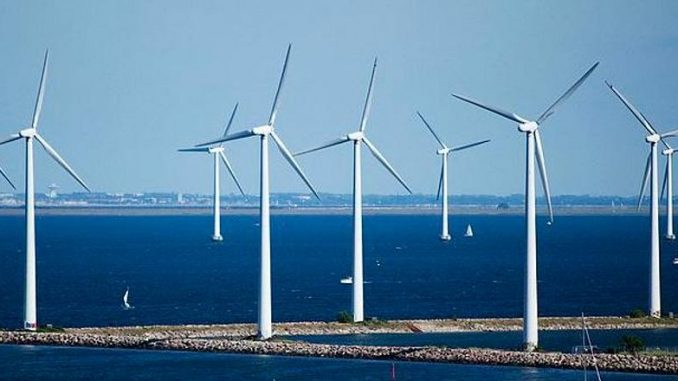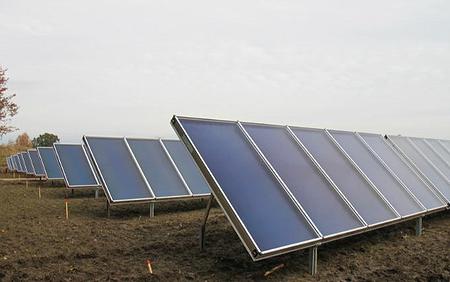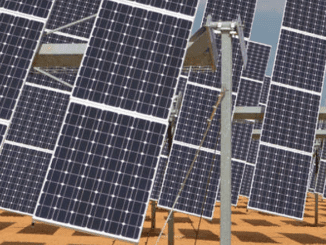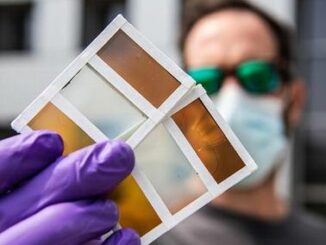
BRUSSELS, Belgium, May 4, 2021 (ENS) – A Danish aid plan to support electricity production from renewable sources has won the approval of the European Commission. Denmark will invest €400 million (nearly US$481 million) to support renewables such as onshore and offshore wind turbines, wave power plants, hydroelectric power plants and solar photovoltaics.
The Commission found that the aid is necessary to further develop the renewable energy generation to meet Denmark’s environmental goals. It also has an incentive effect, as electricity prices do not fully cover the costs of generating electricity from renewable energy sources.
The measure will help Denmark reach its renewable energy targets without unduly distorting competition and will contribute to the European objective of achieving climate neutrality by 2050, the Commission decided.
Executive Vice-President Margrethe Vestager, in charge of competition policy, said, “This Danish scheme will contribute to substantial reductions in greenhouse emissions, supporting the objectives of the Green Deal. It will provide important support to a wide range of technologies generating renewable electricity, in line with EU rules.”
“The wide eligibility criteria and the selection of the beneficiaries through a competitive bidding process will ensure the best value for taxpayers money and will minimise possible distortions of competition,” she said.
Surrounded on three sides by seas, Denmark has been building off-shore wind farms for at least a decade, and in 2019, the country sourced almost half of its power – 47 percent – from wind energy, according to the Danish grid operator Energinet.

And in 2020, a little more than 50 percent of Denmark’s electricity was powered by wind and solar. That means 2020 surpassed 2019 as the greenest year ever in Danish electricity history.
Now, a giant offshore wind farm is under construction off the island of Møn in the Baltic Sea. When it is finished in 2022, it will produce enough electricity to power 600,000 households.
Energinet has just reorganized to support Denmark’s planned conversion to 100 percent green energy by 2050.
The newly approved aid will be awarded through a competitive tendering procedure in the 2021-2024 time period and will take the form of a two-way contract-for-difference premium.
Under this model, where the electricity price is below a reference price established based on an auction, the government pays the renewable electricity producer the difference between the actual electricity price and the reference one.
On the other hand, where the electricity price is above the reference price, the electricity producer pays the government the difference between the actual electricity price and the reference one.
The Commission reasons that this guarantees renewable energy producers long-term price stability, helping them to make the necessary investments, while limiting the cost for the government.
The plan is open until 2024 and aid can be paid out for a maximum of 20 years after the renewable electricity generatin source is connected to the grid.
The Commission’s 2014 Guidelines on State Aid for Environmental Protection and Energy allow EU Member States to support the production of electricity from renewable energy sources, subject to certain conditions.
The Renewable Energy Directive of 2018 established an EU-wide binding renewable energy target of 32 percent by 2030.
With the European Green Deal Communication in 2019, the Commission reinforced its climate ambitions, setting an objective of no net emissions of greenhouse gases in 2050.
In April of this year, the Council and the European Parliament reached a provisional agreement on the net 55 percent target for 2030, which sets the ground for the ‘fit for 55′ legislative proposals scheduled for June 2021.
Featured Image: Wind farm offshore of Denmark’s capital city, Copenhagen, 2009 (Photo by CGP Grey via Wikipedia)
© 2021, Environment News Service. All rights reserved. Content may be quoted only with proper attribution and a direct link to the original article. Full reproduction is prohibited.



